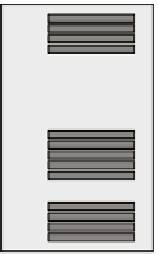Database Reference
In-Depth Information
Similarly, when blocks are required by more than one other instance, Oracle will ship an image of the CR block
(if it has not already done so) to the requesting instance. As we discussed in Chapter 2, blocks are shipped from one instance
to another (illustrated in Figure
17-4
); and the details regarding which instance contains the block are maintained in the
GRD. The number of instances a block can exist is determined by the parameter
_FAIRNESS_THRESHOLD
10
parameter and
defaults to four, meaning only four images of the same block of a particular DBA can exist in a RAC cluster (irrespective
of the number of instances) at any given point in time.
SSKY1
SSKY2
SSKY3
SSKY4
500
500
500
500500
500
500
500
500
Figure 17-4.
Block cloning and imaging
Once the holder reaches the threshold defined by the parameter
_FAIRNESS_THRESHOLD
, it stops making more
copies, flushes the redo to the disk, and downgrades the locks.
11
■
Whereas data movement in a raC environment is at the block level, data modifications are all at the row level
(same as in a single-instance configuration).
Note
Cluster Waits
In this section, we discuss a few of the common cluster-related wait events.
gc cr/current block two-way/three-way
One primary function of a cluster environment is to share blocks between instances, minimizing access to the physical
storage. When a block is required by a session and it's not found in the local cache, it has to be requested either from
another instance (current holder) or the disk. The time the session has to wait for the block is recorded in one of the
transfer wait events depending on where the block was currently being held and how many hops the request passed
through to complete the operation. For example, a two-way event indicates that there was a two-way shipment to transfer
the block and that the requester sends a message to the master and the master ships the block back to the requestor.
Similarly, a three-way event indicates that there were three hops before the block was received by the requestor.
10
Underscore parameters should be modified only after consulting with Oracle support.
11
Tierney, Brian L., Jason R. Lee, Dan Gunter, Martin Stoufer, and Tom Dunigan, “Improving Distributed Application Performance
Using TCP Instrumentation.” Berkeley, CA: Lawrence Berkeley National Laboratory, May 2003.









































































Search WWH ::

Custom Search